If you had to give it up, which subscription would you miss the most?
About Jason Fried
Jason co-founded Basecamp back in 1999. He also co-authored REWORK, the New York Times bestselling book on running a "right-sized" business. Co-founded, co-authored... Can he do anything on his own?
Nothing gets you more focused on solving a problem than actually having that problem.
Which is more useful? Google's links or the actual home page?
It’s interesting how many of Google’s expanded listings have become even more useful than the home page behind the link.
For example, take these two examples. One is the Google listing for Grub & Ellis. The second is the Grub & Ellis home page you get when you click the search result link.
The Google listing

The actual home page
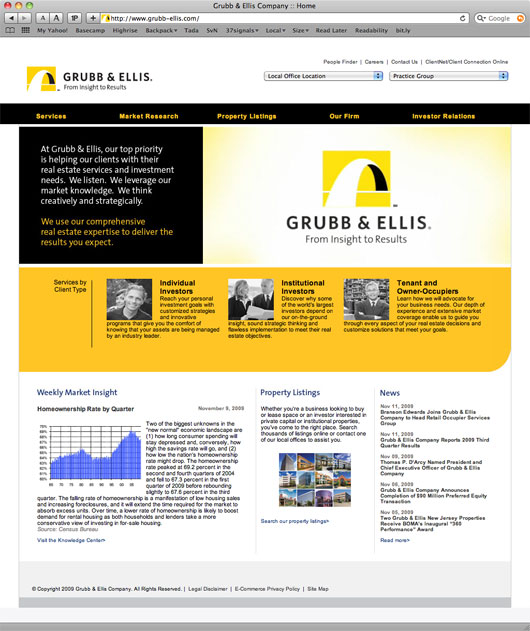
I find the expanded Google listing more useful. It cuts right to what I want to know 95% of the time.
And it’s not just this example site — I’ve found the expanded Google listings more useful than just about any home page I’ve visited lately. What does that say about the state of web design?
[Designed] Bern Hill Railroad Posters
Some beautiful 1950s railroad posters from the cover of Railway Age Magazine. Illustrations by Bern Hill. You can check out the collection on Antiques Roadshow.
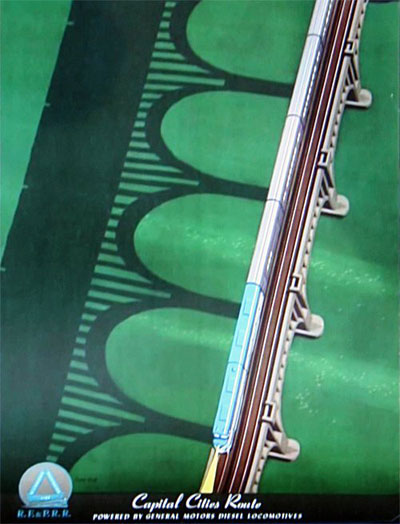

Haystack: Two Week Anniversary + Latest Updates
Haystack is off to a great start. We launched two weeks ago on October 21st, and so far over over 2,500 web designers have been listed. Lots are finding clients as well. That’s exciting.
We’ve been hard at work improving Haystack. Here are some of the improvements we’ve made since launch:
Call to action footer
At the bottom of each company page, we’ve added a call to action after their portfolio shots. This way it’s easier to scroll through someone’s work and then get in touch with them. It says “Like what you see? Contact via email or web.” Here’s what it looks like:
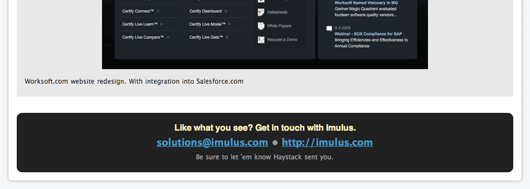
Updated and New flags
We wanted to call out new listings and listings that were recently updated. So for the first 48 hours, a listing card gets a “NEW” badge. Any listings with updated descriptions or new portfolio images get an “UPDATED” badge. Here’s what they look like close up and also in context.
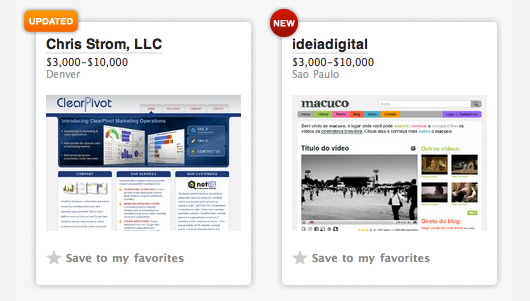
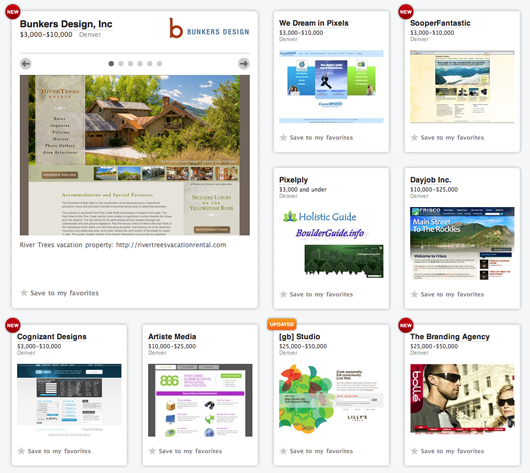
New Car Camo
Car companies go to great lengths to hide new models from from the public (or car paparazzi) during road testing. They’ve gotta drive the cars, but they don’t want to give away their designs too early.
Car camouflage used to be handled with wraps, fake bodies, or fake pieces attached to the actual body. Like:


But lately I’ve noticed more companies using swirly decals or geometric stickers to mask the shape. Check these out:



I would assume once cars get deeper into the testing phase, and aerodynamics, wind noise, and overall ride quality need to be fined tuned, the bulky camp comes off and the swirly surface decals come on. But it does seem like the swirls are new in the last few years.
I wonder who’s behind them (since the same patterns are apparently used by different brands). Which company or inventor is the king of car camo?
(images from WorldCarFans).
When’s the last time you read your site or web app aloud? Not just the big text blocks and the about page, but the headlines, field labels, buttons, error messages, and confirmation emails?
A great way to figure out the weak spots in your product is to demo it live in front of an audience (not just a couple people at an office). Talk through it and read the UI out loud as you click around and do stuff. You’ll notice all sorts of little things that can be improved.
Speaker's Tip: Don't tell the audience you aren't prepared
Lately I’ve been seeing more speakers hop up on stage at a conference and say “I didn’t prepare anything so I’m just gonna wing it.” Or they’ll let you know that they’re “Sorry about the quality of the slides – I put them together quickly on the flight over here this morning.”
I’m all for winging it, but when you say “I’m not really prepared” in front of an audience you’re showing them the ultimate disrespect.
People take days off of work, spend hundreds on a conference ticket, travel for thousands of miles, and pay hefty rates for flights and hotels to come hear you speak, and you tell them you didn’t have time to prepare a talk? What’s cool about that? The audience is busy too, but they found time to come to the conference. You can’t find time to properly prepare a presentation for them?
Now… Some of these unprepared talks have been wonderful. The spontaneity is great, and if a speaker knows their topic they don’t really have to prepare in the traditional sense. So it’s not the quality of the talks, it’s the qualifier. If you aren’t prepared, or if you hastily put together your presentation, just don’t tell the audience. Just perform at your best and keep the pity and embarrassment to yourself.
Making money takes practice like playing the piano takes practice
Most of the people I know who are money-making-machines got started really early. Lemonade stands, car washes, lawn mowing, baseball card trading. I think the reason they are money-making-machines today is because they started early. They learned the skills of negotiation, pricing, selling, and market-reading early. They have more practice selling than most people. That’s one of the reasons they’re better at it than most people.
Making money takes practice, just like playing the piano takes practice. No one expects anyone to be any good at the piano unless they’ve put in lots practice. Same with making money. The more you practice the better you get. Eventually making money is as easy for you as piano is for someone who’s been playing for 10 years.
This is one of the reasons I encourage entrepreneurs to bootstrap instead of taking outside money. On day one, a bootstrapped company sets out to make money. They have no choice, really. On day one a funded company sets out to spend money. They hire, they buy, they invest, they spend. Making money isn’t important yet. They practice spending, not making.
Bootstrapping puts you in the right mindset as an entrepreneur. You think of money more as something you make than something you spend. That’s the right lesson, that’s the right habit, the right imprint on your business brain. You’re better off as an entrepreneur if you have more practice making money than spending money. Bootstrapping gives you a head start.
So if you’re about to start a business, or if you already have a business and you’re thinking about taking funding, or if you’ve already taken funding and are considering going back for more, consider the alternative. Don’t raise money, raise prices. Sell sell sell. Get as much practice as you can. Force yourself to practice. Force yourself to learn how to make money as early as you can. You may hate it in the short-term, but it’ll make you a great businessperson in the long term.
